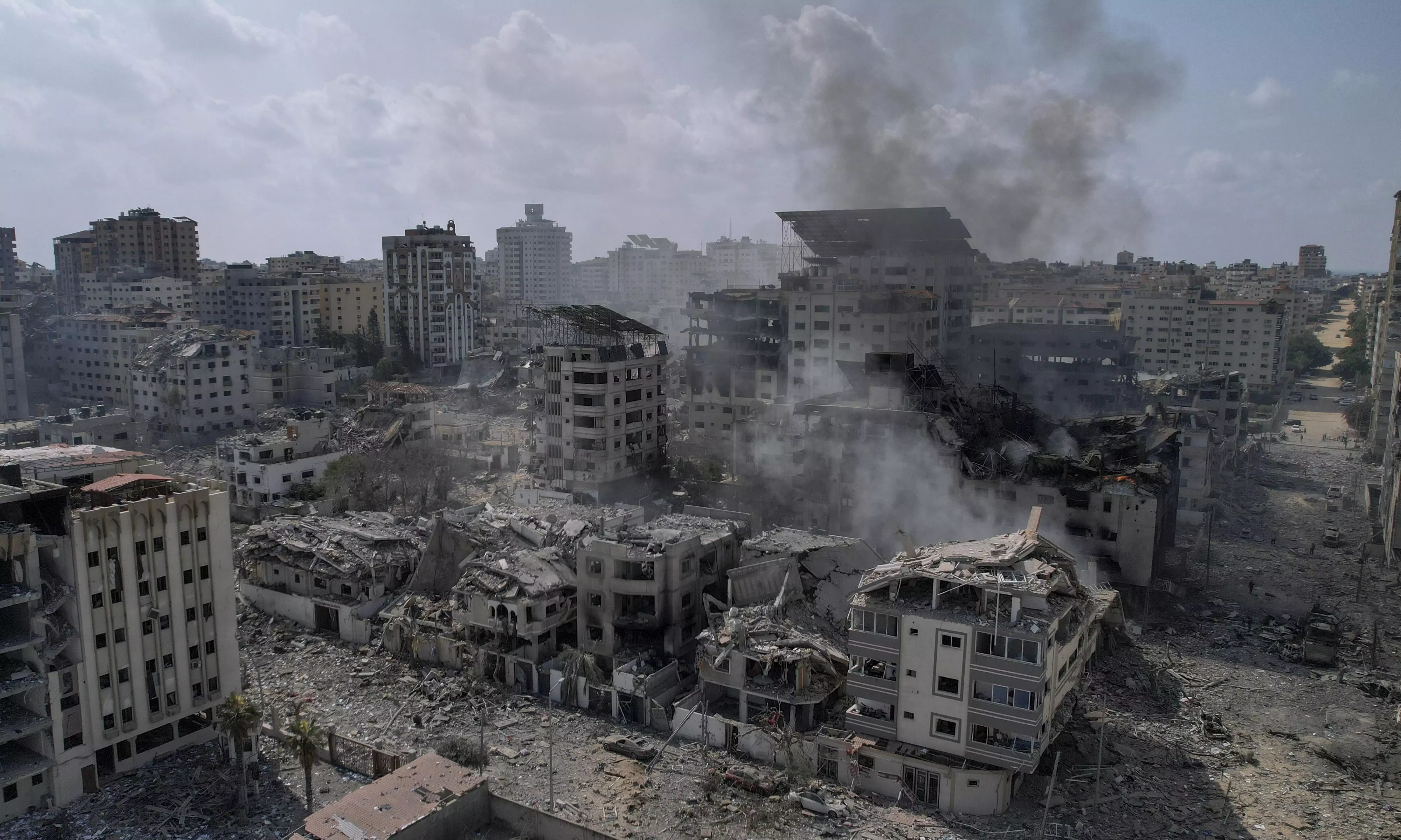
Where does international law fit into the Israeli-Palestinian conflict?
While a siege, as such, is not prohibited, its effects inevitably lead to violations of international humanitarian law

Thinking about the Israeli–Palestinian conflict is never easy. Yet the growing number of declarations being made highlights how important it is to consider the factors involved in making an assessment of the situation under the applicable law.
While the solution to any conflict is political, the fact remains that any armed conflict is covered by a specific branch of international law, the law of armed conflict, also known as international humanitarian law.
Although international humanitarian law is sometimes thought to lack effectiveness, we must not lose sight of the fact that its application, however minimal, ensures that civilian lives are spared.
As a professor at Laval University’s Faculty of Law and Scientific Director of the Institut de recherche stratégique de l'École militaire (an interdisciplinary research centre for conflict and peace studies based in Paris), I specialise in international humanitarian law and am a member of the Paris Human Rights Centre (Research Centre for Human Rights and Humanitarian Law).
Classifying the conflict
The first step to be taken before making any legal analysis in international humanitarian law is to classify the situation. In the present case, this qualification is open to debate.
There are two possible ways to characterise it. It is either a non-international armed conflict between an armed group, Hamas, and a State, Israel, or it is an international armed conflict, owing to the situation of occupation that has prevailed in the Palestinian territories since the Six-Day War of 1967.
In 2012, I argued that despite the unilateral withdrawal of Israeli troops, the territory of the Gaza Strip remained under Israeli occupation. Indeed, when in 2004 the International Court of Justice stated that Israel was obliged to apply international humanitarian law and international human rights law by virtue of its status as occupying power in this territory, Israel unilaterally withdrew its troops from Gaza in 2005, claiming to be free of its obligations.
I believe that for a situation in a territory to be characterised as an occupation, and, therefore, for a power to establish its authority over it, that power needs to deploy its armed forces in the territory. However, the withdrawal of these forces does not ipso facto mean there is no more occupation, as long as the state continues to control the land, sea and air borders, to issue passports to its population and to have its currency in circulation. The fact that Israel can decide to completely cut off the electrical power supply in Gaza only confirms this.
Since 2005, clashes and confrontations between Hamas and Israel have taken place on a regular basis. The fact that they have reached the scale demonstrated by the events of October 7 is not likely to change this assessment.
So, what difference does this make?
None at all.
Whichever way one characterises the conflict, it goes without saying that the acts of deliberately targeting civilians and taking hostages are strictly forbidden. This is even more the case when these acts are part of a pattern of violence whose principal aim is to spread terror among the civilian population.
In the same vein, no matter how the conflict is qualified, it is difficult to see how declaring a “total siege” of the Gaza Strip could be consistent with international humanitarian law. The “siege” is not a notion that is expressed, in extenso, in international humanitarian law. The term siege refers to restricting the movement of people and goods in a specific area with the aim of forcing enemy forces to stop fighting.
While a siege, as such, is not prohibited, its effects inevitably lead to violations of international humanitarian law. For example, preventing the delivery of food or the supply of water can lead to the starvation of the population living in the territory. Using famine as a method of warfare is prohibited. Similarly, restricting or preventing the movement of people means that humanitarian personnel cannot carry out their relief work in the besieged zone.
Allow humanitarian aid
But humanitarian organisations must be allowed to deliver aid to the civilian population and, according to international humanitarian law, the parties in the conflict must even “facilitate their passage”.
The unleashing of violence that we are seeing, including the initial acts and the response to them, is inevitably leading to massive violations of international humanitarian law and therefore to war crimes.
The situation raises the legitimate question of how effective international humanitarian law is. However, if, as Rony Brauman of Médecins sans frontières once said, “to promote international humanitarian law is to promote war” (the comment, in itself, merits conversation), promoting respect for this law in a situation such as the one in Israel and Gaza — which, whatever its nature, is undoubtedly an armed conflict — can do no harm. On the contrary, abandoning the pursuit of respect for international humanitarian law, even when it is being abused, will only lead to more chaos.
In this respect, it is worth remembering that third states, i.e. states which are not parties to this armed conflict, have an obligation to “ensure respect for international humanitarian law”. This means that in all its interactions with the parties to the conflict, Canada, like every other state in the world, has a duty to remind them of their obligations under international humanitarian law.

